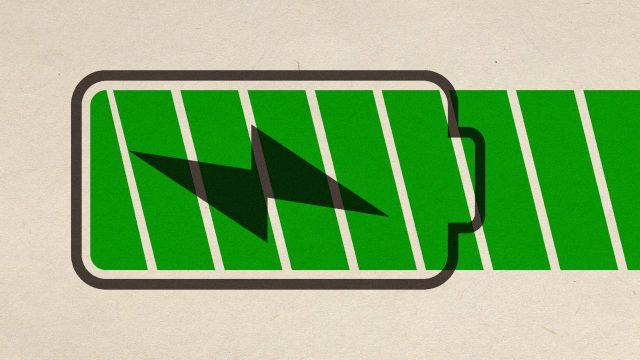
Renewable energy overtook coal power to become the largest source of electricity in the world for the first half of 2025. However, many forms of renewable energy have an efficiency problem, with production not matching up to demand. Storing the excess energy with megabatteries could offer a promising way to bridge the gap.
Storing the sun
One of the biggest problems with many renewable power sources is the mismatch between supply and demand. The production rates of energies like solar and wind “fluctuate according to the weather, the time of day and the season,” said OilPrice.com. For example, when the “sun is shining and solar panels are producing the most energy,” it “also happens to be when the lights are switched off and relatively few people are home using appliances.” This causes an oversupply of energy. The solution could be to store the excess energy in the form of megabatteries.
There are several methods of energy storage, but megabatteries are growing in popularity. The batteries soak up extra power and “discharge energy as the sun sets and demand rises,” said the Financial Times. In addition, “breakthroughs in battery design have played a major role in improving efficiency.” The price of lithium-ion batteries has also dropped significantly since 2010. The “core appeal of batteries is flexibility,” said the European Business Magazine. They “store power when it’s cheap and abundant, then release it when it’s scarce or expensive,” which makes them “invaluable for stabilizing grids,” and “profitable for operators who play the peaks and troughs of wholesale markets.”
“What grid operators and utilities value from batteries is flexibility,” Mark Dyson, a managing director at the Colorado-based nonprofit RMI, said to the Financial Times. “They can be a ‘swiss army knife’ and do whatever is needed on the grid, when and where that is required.” Megabatteries are “quietly redefining what energy security looks like,” said the European Business Network. In the past, “it meant barrels of oil or cubic meters of gas,” but now it is “measured in megawatt-hours of flexible storage — the ability to shift electricity from when it’s produced to when it’s needed.”
Big potential
The use of megabatteries has expanded globally, specifically in the U.S. and China, but also across Europe and Asia. More recently, the electric vehicle brand Tesla “released an upgraded version of its grid-battery product that will allow developers to build bigger energy-storage projects faster,” said Canary Media. Called Megablocks, one of them can hold “20 megawatt-hours of power, which can be discharged for up to four hours at peak capacity,” and “scaled up for a large project, 248 megawatt-hours can fit into an acre.”
Large megabattery projects are becoming more necessary. The increase in AI data centers and concerns over energy grid reliability means “batteries are expected to become a crucial cog in energy systems across the world, especially with their costs plummeting,” said the Financial Times. The market for them is growing in turn. “Battery storage today is what wind and solar were a decade ago,” said a London-based infrastructure investor to the European Business Magazine. “The risk is lower, regulation is clearer and capital is flooding in.”
They can store and release excess energy




